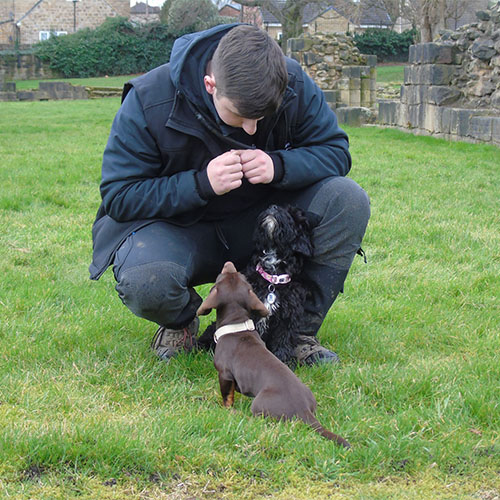


THE HOUND HUB
10 Strategies to manage your disobedient dog
Help & Advice
8 April 2024
Managing a disobedient dog requires patience, consistency, and understanding. Here are some effective strategies to help you manage and improve your dog's behaviour:
- Establish Clear Rules and Boundaries: Dogs thrive on structure and routine. Establish clear rules and boundaries from the beginning, and consistently enforce them. This includes rules regarding where the dog is allowed to go, what behaviour is acceptable, and what commands they need to follow.
- Use Positive Reinforcement: Positive reinforcement is a powerful tool for encouraging desirable behaviours in dogs. Reward your dog with treats, praise, or playtime when they obey commands or exhibit desired behaviours. This encourages them to repeat the behaviour in the future.
- Be Consistent: Consistency is key when training a disobedient dog. Use the same commands, cues, and expectations every time you interact with your dog. Inconsistency can confuse the dog and make it harder for them to understand what is expected of them.
- Provide Adequate Exercise and Mental Stimulation: A tired dog is often a well-behaved dog. Make sure your dog gets plenty of physical exercise and mental stimulation every day. This can include walks, playtime, training sessions, and interactive toys.
- Practice Basic Obedience Training: Teach your dog basic obedience commands such as sit, stay, come, and heel. Practice these commands regularly in different environments and with varying levels of distraction. This helps reinforce the commands and ensures that your dog listens to you in any situation.
- Redirect Undesirable Behaviour: Instead of punishing disobedient behaviour, redirect your dog's attention to more appropriate activities. For example, if your dog is chewing on furniture, give them a chew toy instead. This teaches them what behaviours are acceptable and provides an outlet for their energy.
- Use Timeouts Effectively: If your dog is exhibiting particularly challenging behaviour, such as jumping on people or excessive barking, use timeouts as a form of negative punishment. Remove your attention or temporarily isolate the dog in a quiet area for a brief period. This helps them understand that certain behaviours result in a loss of privileges.
- We are always here to help: If you're struggling to manage your dog's disobedience on your own, don't hesitate to seek help. We can provide personalised board and train programs, that will get you back on track and help you build that lifelong bond with you and your dog.
- Be Patient and Persistent: Changing a dog's behaviour takes time and effort. Be patient with your dog and yourself, and don't give up if you don't see immediate results. Stay consistent with your training efforts, and celebrate small victories along the way.
- Build Trust and Bonding: Strengthen your bond with your dog through positive interactions, playtime, and affection. A strong bond based on trust and mutual respect makes it easier to communicate effectively and reinforces your role as a leader and guide for your dog.
In conclusion, managing a disobedient dog requires a combination of positive reinforcement, consistency, patience, and understanding. By establishing clear rules and boundaries, providing adequate exercise and mental stimulation, practising basic obedience training, redirecting undesirable behaviour, using timeouts effectively, seeking professional help if needed, and building trust and bonding, you can effectively manage your dog's behaviour and strengthen your relationship with them.

For more information on how we can help, please contact us using the form below:
For more information on how we can help, please contact us using the form below:
